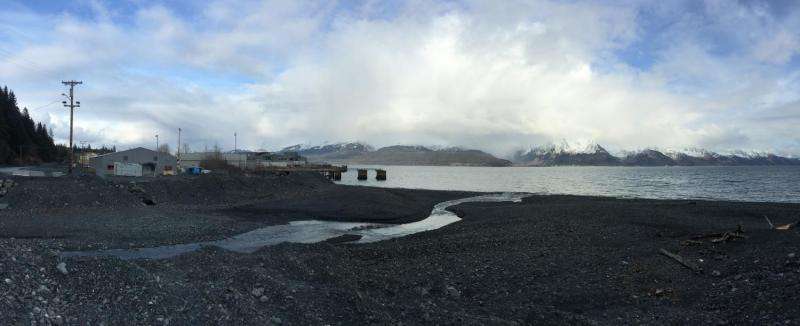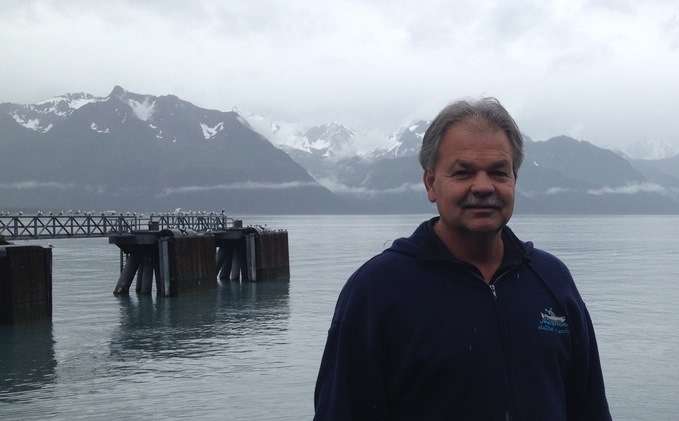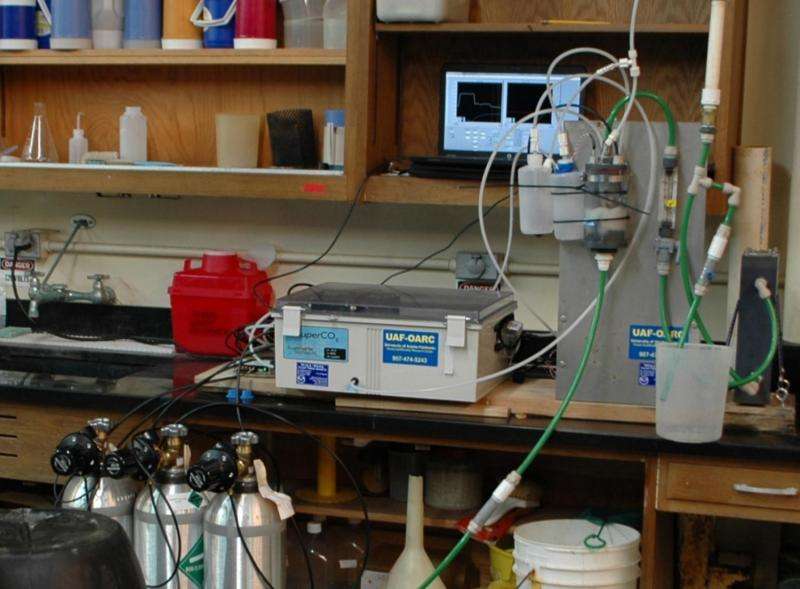Monitoring seawater reveals ocean acidification risks to Alaskan shellfish hatchery

New collaborative research between NOAA, University of Alaska and an Alaskan shellfish hatchery shows that ocean acidification may make it difficult for Alaskan coastal waters to support shellfish hatcheries by 2040 unless costly mitigation efforts are installed to modify seawater used in the hatcheries.
"Our research shows there could be significant effects from ocean acidification on Alaska's emerging shellfish hatchery industry in a matter of two and half decades," said Jeremy Mathis, Ph.D., an oceanographer at NOAA's Pacific Marine Environmental Laboratory and a co-author of the study, "On the Frontline: Tracking Ocean Acidification in an Alaskan Shellfish Hatchery," appearing today in PLOS ONE. "We need to continue to partner with industry and other stakeholders to make sure we're providing the environmental intelligence needed by industry to answer key questions and make decisions to meet these challenges."
The absorption of carbon dioxide primarily from human sources is making global oceans more corrosive to calcium carbonate minerals which shellfish need to build and maintain shells. The waters off Alaska are especially vulnerable to ocean acidification because the absorption of human-caused carbon dioxide emissions is not the only process contributing to acidity. Melting glaciers, upwelling of carbon-dioxide rich deep waters, the natural decomposition of plant-life that gives off carbon dioxide and the fact that cold water more readily absorbs carbon dioxide all exacerbate ocean acidification in the region.
A team of scientists from NOAA's Pacific Marine Environmental Laboratory in Seattle and the University of Alaska Fairbanks worked with the Alutiiq Pride Shellfish Hatchery in Seward, Alaska, to monitor seawater chemistry over a 10-month period from October 2013 to August 2014 to measure the potential effects of changing ocean chemistry on the growth of oyster, clam, scallop and other shellfish larvae or seed.

Researchers found that ocean chemistry off Seward fluctuates significantly by season. There is currently a five-month window during spring and summer when growing conditions favor larval shellfish, followed by periods of poor growing conditions in autumn and winter. But under some predicted scenarios for carbon dioxide emissions this five-month window for growing shellfish could close as early as 2040. The hatchery would then only be able to produce viable shellfish seed if it installed costly mitigation efforts to modify ocean water entering the facility.
While shellfish farming in Alaska involves mostly small-scale operations focused on oysters and mussels, stakeholder interest is growing and there is an effort underway to increase farmed shellfish production to a multi-million dollar annual level. Communities are embracing shellfish farming to diversify the local economy and create jobs. Currently, Alutiiq Pride is the only shellfish hatchery in Alaska that can provide seed stock to local residents that otherwise have to buy seed from outside the state. However, as the cost of producing seed stock increases in states like Washington and Oregon due to rising ocean acidification levels, hatcheries will be looking for alternative locations to supply large-scale operations. The growth of shellfish farming increases the need for effective monitoring of ocean waters.
"A key to tracking ocean acidification and its effects is our ability to make continuous robust measurements of the carbonate system in hatchery settings to understand how it varies over time," said Wiley Evans, Ph.D., of the University of Alaska Fairbanks, the lead scientist on the project. "We've come a long way in our ability to monitor ocean acidification."

Jeff Hetrick, owner of Alutiiq Pride and a longtime Alaska resident, explained why he wanted to participate in the research. "Ocean acidification has had major impacts on hatcheries in the Pacific Northwest and we wanted to evaluate what, if any, impacts could be expected here in Seward," Hetrick said. "The results have been alarming."
The study reinforces broader research showing that Alaska's commercial and subsistence fisheries are vulnerable to ocean acidification. Alaska is home to some of our nation's most valuable commercial and subsistence fisheries. NOAA's latest Fisheries of the U.S. report estimates that nearly 60 percent of U.S. commercial fisheries landings by weight are harvested in Alaska. These 5.8 billion pounds brought in $1.9 billion in wholesale values or one third of all landings by value in the U.S. in 2013.
Ocean acidification monitoring will continue at the Alutiiq Pride Shellfish Hatchery and will expand to at least one other site along the southeast Alaska coast in late 2015.
Journal information: PLoS ONE
Provided by NOAA Headquarters



















